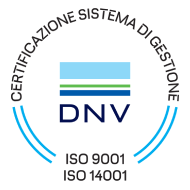What Can be Done to Remedy Staff Turnover Rates in Healthcare?
For a sector focused on providing care to the ailing, it’s curious that retention is such an acute issue for healthcare food service managers. Recently, I reached out to a few of our clients to speak about a number of issues that are top of mind with running their operations, and the matter of staff turnover marked a major flashpoint. I wanted to share some of the thoughts they had around these issues in the hope that we could identify some common pain points, but also entertain some options to improve staff retention and morale.
Please note that, to respect confidentiality, we’re unable to provide names or the institutions with which they are associated, but all three managers were located in mainly urban settings within North America.
As a jumping off point for the discussion, let’s get down to the brass tacks: budget. There’s never enough it seems. Greater hourly pay will always be a welcome incentive, more than any other initiative, but operations are running tight budgets and can rarely afford to increase pay. Managers have to be creative in terms of how they entice staff to stay on the job but suffice to say, recruitment is now an ongoing exercise.
The Divide
There is a noticeable divide between part-time and full-time staff. It’s not just a matter of pay scale, but of course there is the addition of benefits for full time staff. Should it be any surprise that there is a lack of loyalty among part time staff? People who hold down these positions likely have another job as well to make up the income required to cover living expenses. Hours can fluctuate and there is likely the prospect of another part time position closer to home.
Interestingly, if the location of the hospital is not on a regularly serviced transit line, then the logistics of travel between home and work may not be worth the trouble. Staff may opt to find jobs that are closer to home. Does this mean some sort of transit incentive could be offered to offset the costs and logistical hassles?
People Are Stretched
Keep in mind, healthcare is notorious for having stressful environments. People are expected to take on a lot of responsibility. They have to work around patients who are undergoing difficult times as they recover. These are physically demanding roles that involve standing for long shifts. For some facilities the staff is largely comprised of a multi- ethnic mix, and so English is not necessarily a first language. And as a number of these food service managers point out, the expectations to keep up on nutritional information and other technical reading can be a challenge. Is it any wonder that the option to go work in a fast food operation seems more appealing?
Those costs associated with losing a staff person – both financial and timewise – are magnified by the time it takes to hire someone, train them and get them up to speed in a new position. And consider how many people are recruited for openings compared to how many people actually qualify. Investing the effort in to retaining a current staff member appears far more valuable than the costs associated with having to take on someone new.
Improving Retention
One of our contacts undertook an active campaign to help highlight the importance of the ‘enabling staff,’ as they’re called. It was imperative to show them appreciation and to say thanks – and make sure others saw that happening. This is especially important in a healthcare environment where physicians tend to consume the spotlight and nursing staff earn the admiration of others by working in the trenches. Food staff and others often get lost in the mix, so it’s something to draw attention to their importance in the grand ecosystem of a hospital to realize how everyone contributes to patient health in their own way.
How to improve the prospects of retaining staff in a challenging work environment? First, accept that there is only so much you can do when faced with tight budgets and a demanding work environment. Check your expectations, as this is not an issue of the way you lead, but a matter of simple economics for many.
One hospitality manager spoke of holding focus groups among staff to better understand how to motivate and retain staff. That idea of open discussion and getting people involved in providing solutions can build a stronger sense of camaraderie and strengthen the work environment. Other ideas that were shared included providing staff meals, hosting potlucks to promote staff recognition and even creating friendly competitions among staff.
Also, recognize that back of house staff don’t necessarily connect with the patients like your front-line staff do. When staff are actually taken into the wards to either assist with food service or simply to accompany staff, they make a connection between what they do behind the scenes and how they have a direct impact on improving lives. It’s a small gesture, but modest initiatives can add up to something much bigger.
One of our clients takes their staff up to the ward where veterans are located so they can hear firsthand the compliments. That visibility can mean a lot, let alone the fact that for those occasionally disgruntled employees, seeing people in difficult health situations provides a sobering reality check.
In the end, it’s clear that staff retention will always be a thorny subject. Those who are given more freedom to be creative in providing solutions or who recognize their staff appreciate acknowledgement are likely to encourage a stronger sense of loyalty.
Care to chip some ideas to the discussion? We’d be interested in knowing what strategies work for you in both attracting and maintaining staff.


















